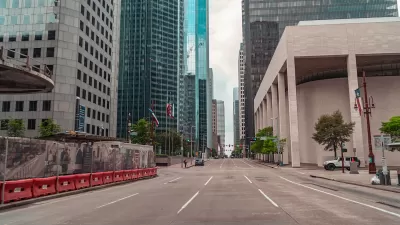Through advancements in technology, digital facades are becoming significantly easier to implement on a wide variety of architectural projects. Programmable surfaces maybe a big part of the future of buildings.
But planners will be challenged to keep up with the fast pace of development and the facades impact on urban settings.
"Digital facades, sometimes referred to as media facades, are nothing new, of course. Recent examples, such as UNStudio's Galleria Department Store (2004) in Seoul, trace their lineage through the earliest neon signs and architects' responses to 20th century media and computerization. But cheaper display technology, and the money to be made from digital outdoor advertising, suggest that more buildings will incorporate digital signage. Noncommercial uses of lighting, digital screens, and other programmable, reconfigurable elements are also on the rise.
Digital facade is a broad term, but these dynamic claddings typically feature LED lights or projection systems and might display images. Some newer, energy-efficient 'smart skins' control light and shading in response to the weather and can also display images. For example, RMIT University in Melbourne, Australia recently broke ground on its Design Hub, the exterior of which is lined with thousands of sandblasted glass tubes containing solar collectors. The tubes double as pixels when lighted. 'The direction is toward essentially all architectural surfaces being potentially programmable,' says William Mitchell, director of MIT's design lab."
FULL STORY: Planners, Designers Mull Implications of Digital Surfaces

Alabama: Trump Terminates Settlements for Black Communities Harmed By Raw Sewage
Trump deemed the landmark civil rights agreement “illegal DEI and environmental justice policy.”

Study: Maui’s Plan to Convert Vacation Rentals to Long-Term Housing Could Cause Nearly $1 Billion Economic Loss
The plan would reduce visitor accommodation by 25% resulting in 1,900 jobs lost.

Planetizen Federal Action Tracker
A weekly monitor of how Trump’s orders and actions are impacting planners and planning in America.

Wind Energy on the Rise Despite Federal Policy Reversal
The Trump administration is revoking federal support for renewable energy, but demand for new projects continues unabated.

Passengers Flock to Caltrain After Electrification
The new electric trains are running faster and more reliably, leading to strong ridership growth on the Bay Area rail system.

Texas Churches Rally Behind ‘Yes in God’s Back Yard’ Legislation
Religious leaders want the state to reduce zoning regulations to streamline leasing church-owned land to housing developers.
Urban Design for Planners 1: Software Tools
This six-course series explores essential urban design concepts using open source software and equips planners with the tools they need to participate fully in the urban design process.
Planning for Universal Design
Learn the tools for implementing Universal Design in planning regulations.
Caltrans
Smith Gee Studio
Institute for Housing and Urban Development Studies (IHS)
City of Grandview
Harvard GSD Executive Education
Toledo-Lucas County Plan Commissions
Salt Lake City
NYU Wagner Graduate School of Public Service





























